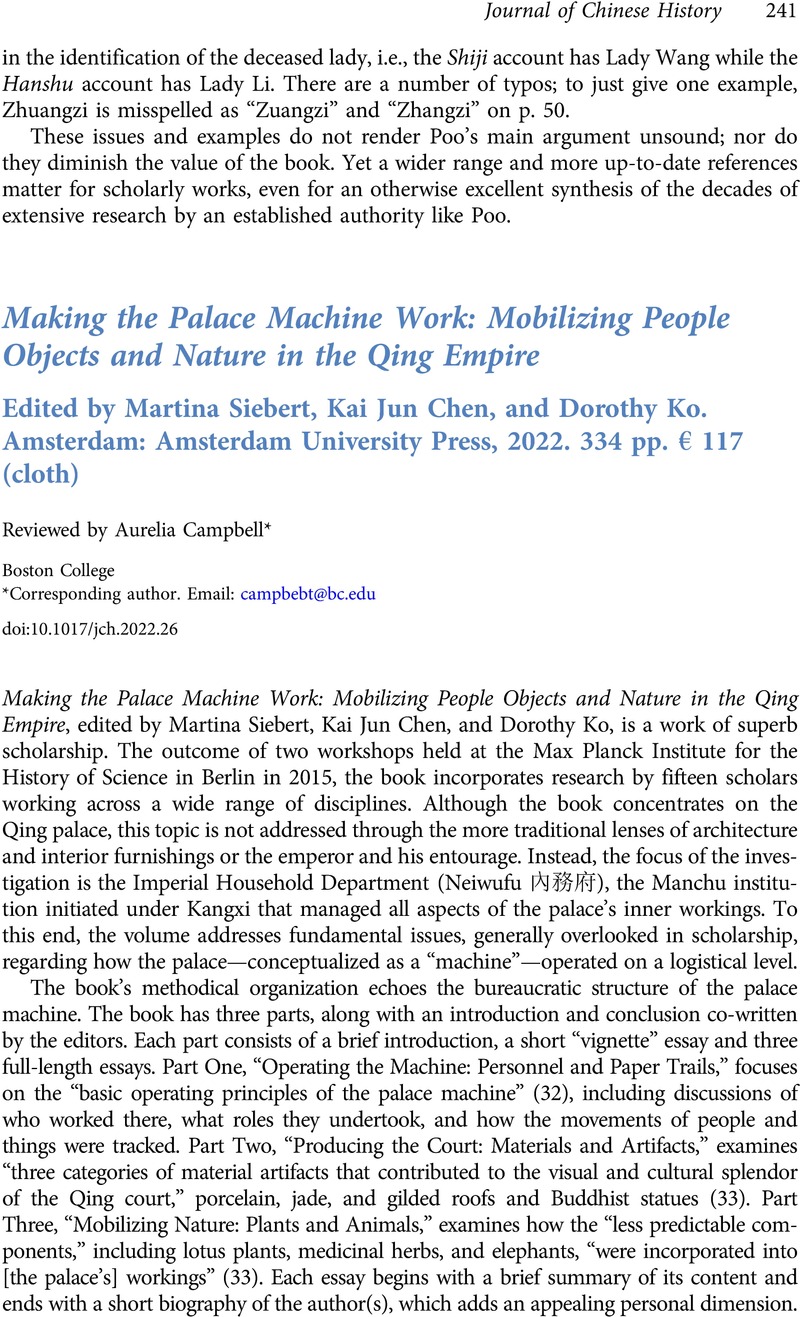No CrossRef data available.
Article contents
Making the Palace Machine Work: Mobilizing People Objects and Nature in the Qing Empire Edited by Martina Siebert, Kai Jun Chen, and Dorothy Ko. Amsterdam: Amsterdam University Press, 2022. 334 pp. € 117 (cloth)
Review products
Making the Palace Machine Work: Mobilizing People Objects and Nature in the Qing Empire Edited by Martina Siebert, Kai Jun Chen, and Dorothy Ko. Amsterdam: Amsterdam University Press, 2022. 334 pp. € 117 (cloth)
Published online by Cambridge University Press: 25 November 2022
Abstract
An abstract is not available for this content so a preview has been provided. Please use the Get access link above for information on how to access this content.

- Type
- Book Review
- Information
- Copyright
- Copyright © The Author(s), 2022. Published by Cambridge University Press
References
1 See, for instance, Berliner, Nancy, ed. The Emperor's Private Paradise: Treasures from the Forbidden City (Salem, MA: Peabody Essex Museum, 2010)Google Scholar, and Berliner, Nancy, ed. Juanqinzhai in the Qianlong Garden (London: Scala Publishers, 2009)Google Scholar.



